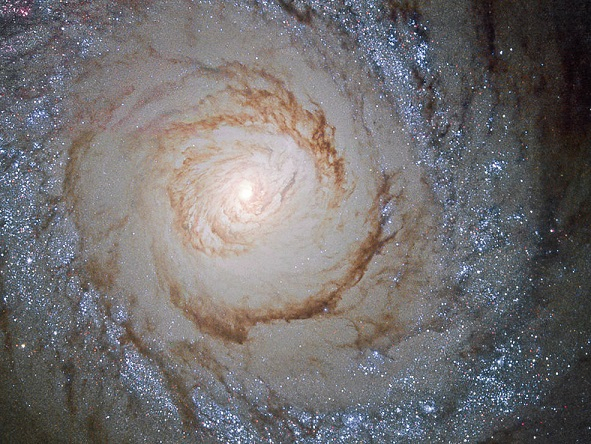The European Space Agency (ESA) released a photo of a peculiar cosmic structure known as the Cat's Eye Galaxy. This galaxy is characterized by an outer ring that's rich in active star formations.
The galaxy, known officially as Messier 94, was photographed by the ESA and NASA's Hubble Space Telescope. It was first discovered in 1781 by an astronomer from France named Pierre Mechain after spotting it in the Canes Venatici constellation. According to NASA, Messier 94 is approximately 16 million light-years from Earth's neighbourhood.
Messier 94's Size And Shape

Like Milky Way, Messier 94 is a spiral galaxy. It was originally believed that the galaxy was about 30,000 light-years wide. But, a recent discovery revealed that it has two arms that spiral into space, tripling its overall diameter.
As its informal name suggests, Messier 94 is shaped like an eye due to an outer ring surrounding its bright galactic centre. This feature is referred to as a starburst ring due to the number of stellar objects sprouting within it.
Star Formations In Messier 94
According to NASA, Messier 94's starburst ring hosts a very active star-forming region. Stars within this outer ring are likely formed due to the pressure wave that flows out of the galaxy's bright centre.
This wave compresses the various cosmic materials such as gas and dust in the outer ring, which increases the temperature in the region. As noted by the agency, this natural process creates the ideal conditions for new stars to form.
"The cause of this peculiarly shaped star-forming region is likely a pressure wave travelling outward from the galactic centre, compressing the gas and dust in the outer regions," NASA explained in a statement. "The compression of material means the gas starts to collapse into denser clouds. Inside these dense clouds, gravity pulls the gas and dust together until the temperature and pressure are high enough for stars to be born."









